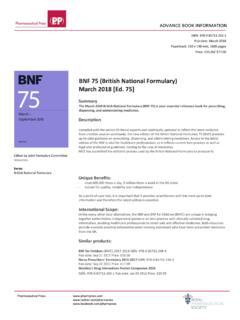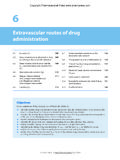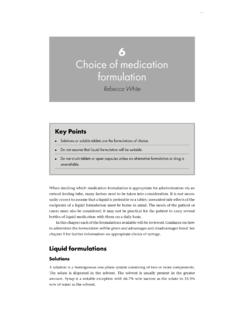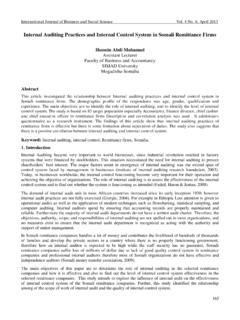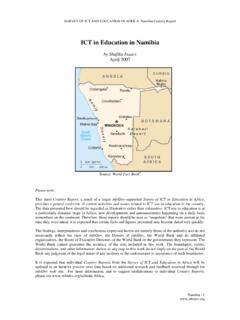Transcription of Essentials of Pharmacy Management, 2nd ed.
1 222 The role of business in pharmacypracticeChanges in the demography of the USA14 Age distribution of the population14 The aging of the population14 Changing racial composition of the population15 Deciding on a role for pharmacy16 The practices of Pharmacy and business16 Quality of care vs. generation of profits17 Business and ethical standards17 The role of competition17 Utilization of resources18 Remaining competitive and adapting tochange18 Deciding on roles for pharmacists18 Evolution of the profession18 The role of pharmacists as healthcareprofessionals20 The role of the pharmacist within thecommunity20 The pharmacist as a clinical purist21 Identifying the challenges for communitypharmacies21A business world orientation21 Challenges in community settings22 Challenges in hospital settings23 How to integrate different managerial functions23 Planning24 Organizing24 Staffing26 Directing26 Controlling26 Recognizing the functional areas of business27 Accounting function27 Financial function28 Human resource management
2 Function29 Operations management function29 Marketing function29 Summary30 Questions for discussion30 Self-test review30 References31 Learning objectivesThe objectives of this chapter are to assist you to be able to explain: the misconceptions about the role of business in Pharmacy practice why a business perspective is important challenges for community and hospital pharmacies how to integrate different managerial functions the functional areas of chapter forEssentials of Pharmacy Management14 Essentials of Pharmacy ManagementKey termsAccounting functionControllingDirectingFinance functionHuman resourcesHuman resource management functionInput output systemMarketing functionMaterial resourcesMonetary resourcesOperations management functionOrganizingPlanningRemaining competitiveStaffingUtilization of resourcesChanges in the demography of theUSAMany factors have helped to bring about an evolutionin the practice of Pharmacy .
3 Among the more impor-tant ones from a business perspective are the changesin the demography of the USA, healthcare usage andproviders, and attitudes toward the traditional role ofthe pharmacist and of the most important factors affecting mod-ern healthcare is the changing demography of theUSA. Most notably, there has been a massive dis-tortion of the age distribution of the population, ageneral aging of the population, and a changing distribution of the populationThe effects of the baby boom period followingWorld War II coupled with the birth dearth in theearly 1970s, when fertility rates declined dramatically,caused a pronounced shift in age distributions. The ef-fect has often been called a pig in a python, similarto what happens to the shape of a large snake afterit swallows a whole pig.
4 As the pig moves throughthe snake s body, it distorts the shape of the snakein much the same manner as the baby boom grouphas altered the demography of the USA as it movesthrough its life change in the distribution of the populationcan be seen in Table The 25- to 44-year-old agegroup is declining as a percentage of the total popula-tion starting from 1990, while 45 and older is increas-ing as baby boomers move through this Pharmacy managers, it is difficult not to targetthe baby boom group as it heads toward senior doubt, it will be a major concern for businessesand insurance companies in their formulation of poli-cies for payment of their prescription drug costs. Asdescribed later in this chapter, the costs of healthcarehave grown significantly in recent decades, and asmore of the baby boomers begin to reach age 65,drug costs and usage could skyrocket.
5 Pharmacies canexpect a restructuring of their payment systems asgovernment and the private sector try to implications of the distortion of thedemography are the fact that healthcare services willbe refocused on the 45- to 65-year-old age group. Thetypes of services and products they need will take ongreater importance with the sheer increase in numbersof people. Competition among pharmacies for theirbusiness will become more intense, not only becauseof the immediate dollar potential but because loyaltiesdeveloped now may extend into a time when the babyboomers become aging of the populationThe aging, or graying, of America is also quiteevident. Within the population group aged 65 or moreyears, those 80 and older are making up a largerpercentage.
6 This is shown in Table From 1980through the year 2009, the percentage who are 85 orolder increased from to are living longer, and this aging process isexpected to continue further. As shown in Table ,life expectancies for both females and males haverisen by years from 1970 to 2010, and are ex-pected to increase even more by the year would be expected, the healthcare implicationsof this are quite significant. Seniors have more anddifferent needs for health services than do other mem-bers of the population. They visit physician officesmore frequently, require more hospital stays, use moreprescription and non-prescription drugs, and have agreater number of multiple medical addition, seniors require different have hearing or sight impairments, diminishedcognitive skills, are physically limited, etc.
7 A com-munity Pharmacy targeting an elderly market, for ex-ample, may need wider aisles, larger signs, improvedSample chapter forEssentials of Pharmacy ManagementThe role of business in Pharmacy practice15 Table distribution of the US populationAge groupUnit1980%2000%2005%2009%1,000226,54 6100282,172100295,753100307,0071009 years and under1,00033, , , , 24 years1,00060, , , , 44 years1,00062, , , , 64 years1,00044, , , , years and older1,00025, , , , US Census Abstract of the United States: 2011. Resident Population by Sex and Age: 1980 to age 65 years and olderAge groupUnit1980%2000%2005%2009%65 74 years1,00015, , , , 84 years1,0007, , , , years and over1,0002, , , , ,55035,07436,70439,571 From US Census Abstract of the United States: 2011.
8 Resident Population by Sex and Age: 1980 to (projection) Population Projections by Race, Hispanic-Origin Status, andAge: 2010 and , and a staff that understands how to copewith the mannerisms of seniors. Similarly, the typesof prescription drugs and non-prescription productsare different from those needed to care for a youngergroup of patients. And pharmacies in the future willlikely target more of their efforts and resources on theover-65 racial composition of thepopulationA third major change that is taking place withinthe American population is the shift in racialcomposition. Non-White populations are expected togrow rapidly, and much of the growth within the White category is Hispanic.
9 This can be seen inTable implications of the changing racial compo-sition of the marketplace are quite pronounced. Forsome groups, there are differences in culture, lan-guage, and product and service needs. Historically,however, it has not been economically feasible forpharmacies to target their efforts partly or completelyon a particular ethnic group. In the next severaldecades, however, some ethnic groups will be suf-ficiently large and geographically concentrated thatit will become financially attractive to do so. Thismeans, for example, ensuring that Pharmacy staff canspeak a language other than English, the pharmacycarries non-prescription merchandise that is desiredby the particular ethnic group, and signage in thepharmacy is in a second from the possible growth of specialty phar-macies, nearly all community and hospital pharma-cies need to become more attuned to unique cultures,languages, etc.
10 Having staff that can speak Span-ish or some dialects of Chinese, carrying a range ofnon-prescription merchandise used predominantly byan ethnic group, and understanding a group s atti-tudes toward the administration of drug products isSample chapter forEssentials of Pharmacy Management16 Essentials of Pharmacy ManagementTable of USA by raceRace2000200620082009 Percentage change2000 2009 Total282,171,957298,593,212304,374,84630 7,006, race population total278,239,086293,768,055299,216,15430 1,683, ,602,436239,046,846242,685,070244,298, or African American35,807,82438,260,79739,204,59639 ,641, Indian and AlaskaNative2,675,9002,978,5643,095,2463 ,151, ,687,31212,941,84913,665,38614,013, Hawaiian and otherPacific Islander465,614539,999565,856578, US Census Abstract of the United States: 2011.



